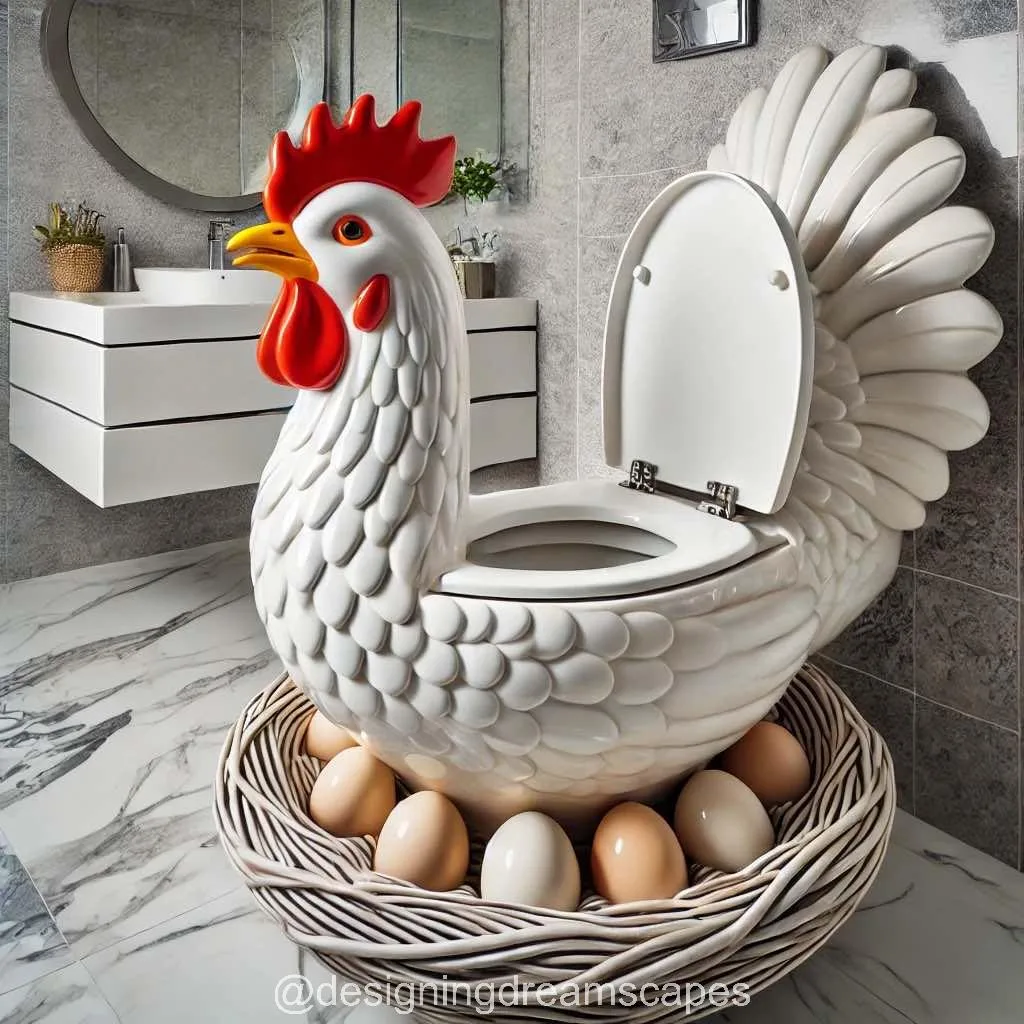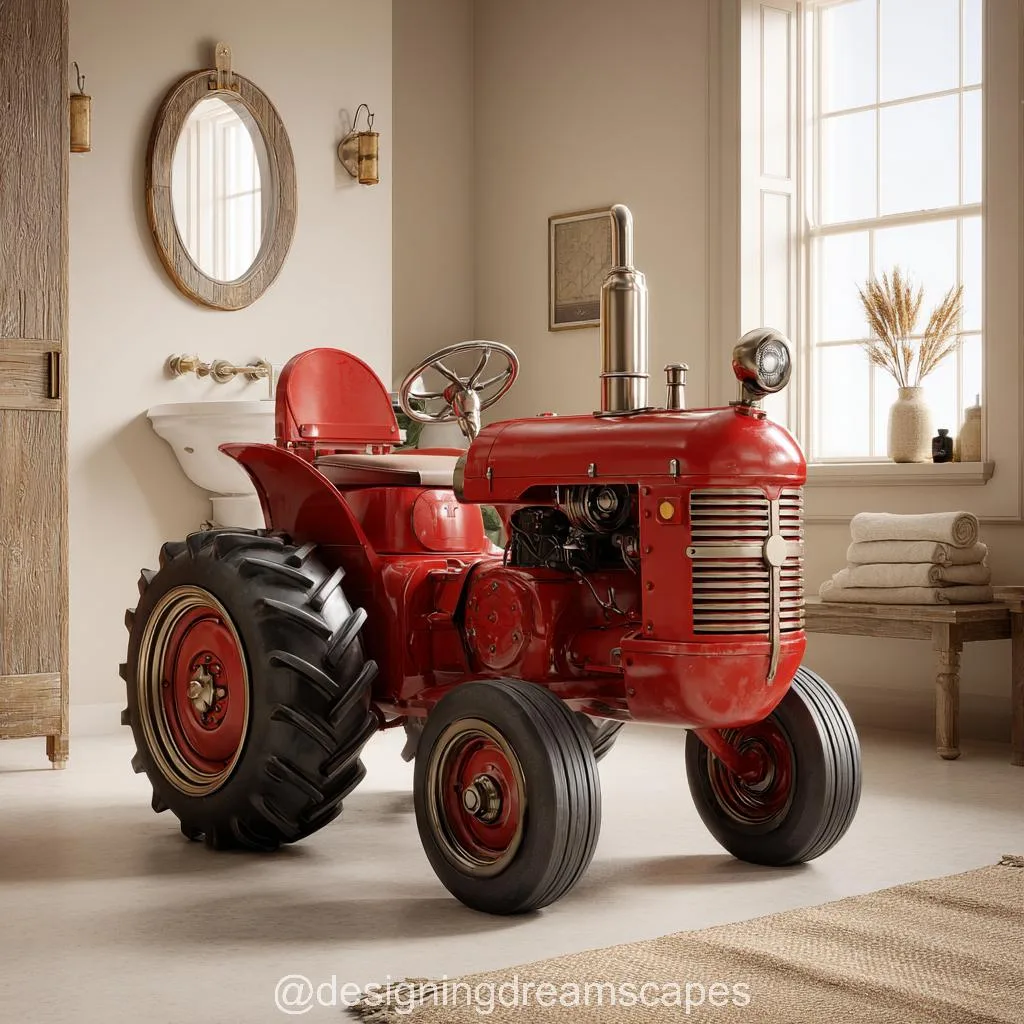In the world of modern poultry farming, hygiene plays a crucial role in ensuring the health and productivity of chickens. Traditionally, poultry farmers have relied on deep litter systems, frequent coop cleanings, and waste management strategies to maintain cleanliness. However, an innovative concept is revolutionizing poultry hygiene: chicken toilets. This groundbreaking solution is designed to improve sanitation, enhance chicken welfare, and simplify waste disposal.
Chicken toilets are specially designed waste collection systems that train or encourage chickens to relieve themselves in designated areas, reducing the spread of diseases and keeping their living environment clean. But how do they work? What benefits do they offer? And why are they becoming an essential feature in advanced poultry care? This article delves into the concept of chicken toilets, exploring their mechanics, advantages, and their potential impact on poultry farming.
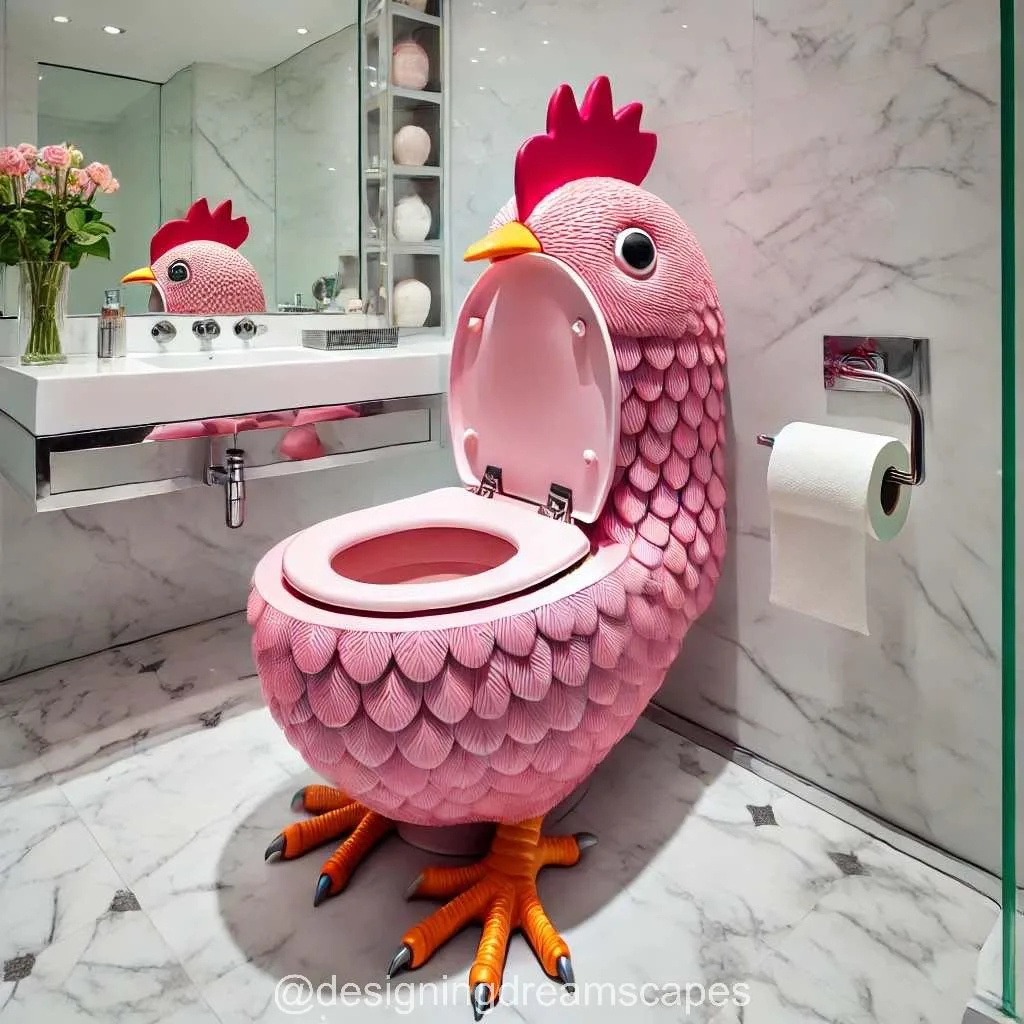
Contents
The Concept of Chicken Toilets
What Are Chicken Toilets?
Chicken toilets refer to innovative waste management systems that either involve training chickens to use a designated space for defecation or implementing automated systems that collect and remove chicken droppings. These systems aim to maintain cleaner coops, reduce ammonia buildup, and create a more hygienic environment for both backyard and commercial poultry operations.
Some chicken toilet models involve:
- Training-Based Solutions: Similar to cat litter boxes, these setups encourage chickens to relieve themselves in a specific area.
- Automated Waste Collection Systems: These include conveyor belts or absorbent pads that collect and remove waste efficiently.
- Self-Cleaning Flooring: Some designs use slatted flooring with waste collection trays underneath, ensuring waste is separated from the chickens’ living space.
The Science Behind Chicken Toilets
The success of chicken toilets relies on behavioral conditioning and engineering ingenuity. Chickens naturally prefer to roost in clean areas, and by placing toilet zones strategically, they can be trained or encouraged to use them.
For automated systems, engineering advancements in waste management technology have introduced self-cleaning mechanisms similar to those found in commercial poultry farms, where droppings are immediately transported to disposal areas, reducing contamination and disease transmission.
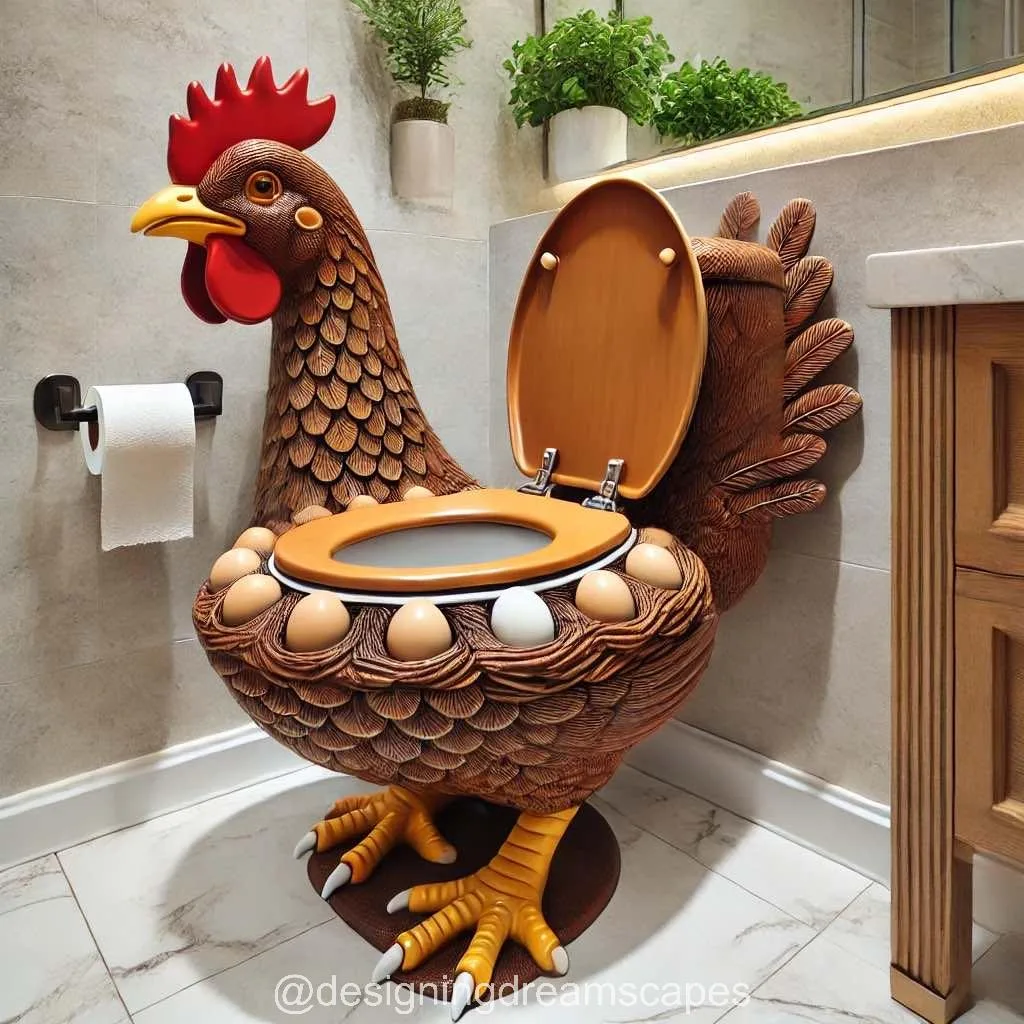
The Benefits of Chicken Toilets
1. Enhanced Poultry Hygiene and Health
One of the primary reasons for implementing chicken toilets is improved hygiene. Traditional coops require frequent cleaning due to the accumulation of feces, which can harbor bacteria and parasites. Chicken toilets help by:
- Reducing exposure to harmful bacteria like Salmonella and E. coli.
- Minimizing ammonia buildup, which can cause respiratory issues in chickens.
- Preventing foot and feather contamination, reducing infections such as bumblefoot.
2. Easier Waste Management
Cleaning a chicken coop is a labor-intensive task that many poultry keepers find time-consuming. Chicken toilets simplify waste disposal by:
- Collecting droppings in designated containers, reducing manual cleaning efforts.
- Allowing for efficient composting, as waste is gathered in a controlled manner.
- Lowering the frequency of full coop cleanouts, saving both time and labor costs.
3. Reduced Odor and Improved Air Quality
A major challenge in poultry keeping is managing odors from accumulated waste. Ammonia from chicken droppings can create an unpleasant smell and cause respiratory distress in both chickens and their owners. Chicken toilets help mitigate this issue by:
- Localizing waste in one area, making it easier to control odor.
- Using absorbent materials or ventilation systems to neutralize smells.
- Keeping coop air fresher, which is especially beneficial for enclosed or indoor setups.
4. Environmental and Sustainability Benefits
Proper waste management is crucial for sustainable farming. Chicken toilets contribute to environmental sustainability by:
- Encouraging composting: Collected waste can be used as organic fertilizer for gardens and farms.
- Reducing water usage: Traditional coop cleaning requires significant water consumption, while chicken toilets minimize the need for frequent washing.
- Lowering greenhouse gas emissions: Efficient waste management reduces methane emissions associated with decomposing chicken manure.
5. Increased Comfort and Productivity in Chickens
A cleaner coop leads to happier, healthier chickens. This, in turn, boosts productivity in terms of egg-laying and overall well-being. Chickens living in hygienic conditions experience:
- Reduced stress and discomfort
- Better feather condition and overall health
- Higher egg production rates due to a cleaner and more comfortable environment
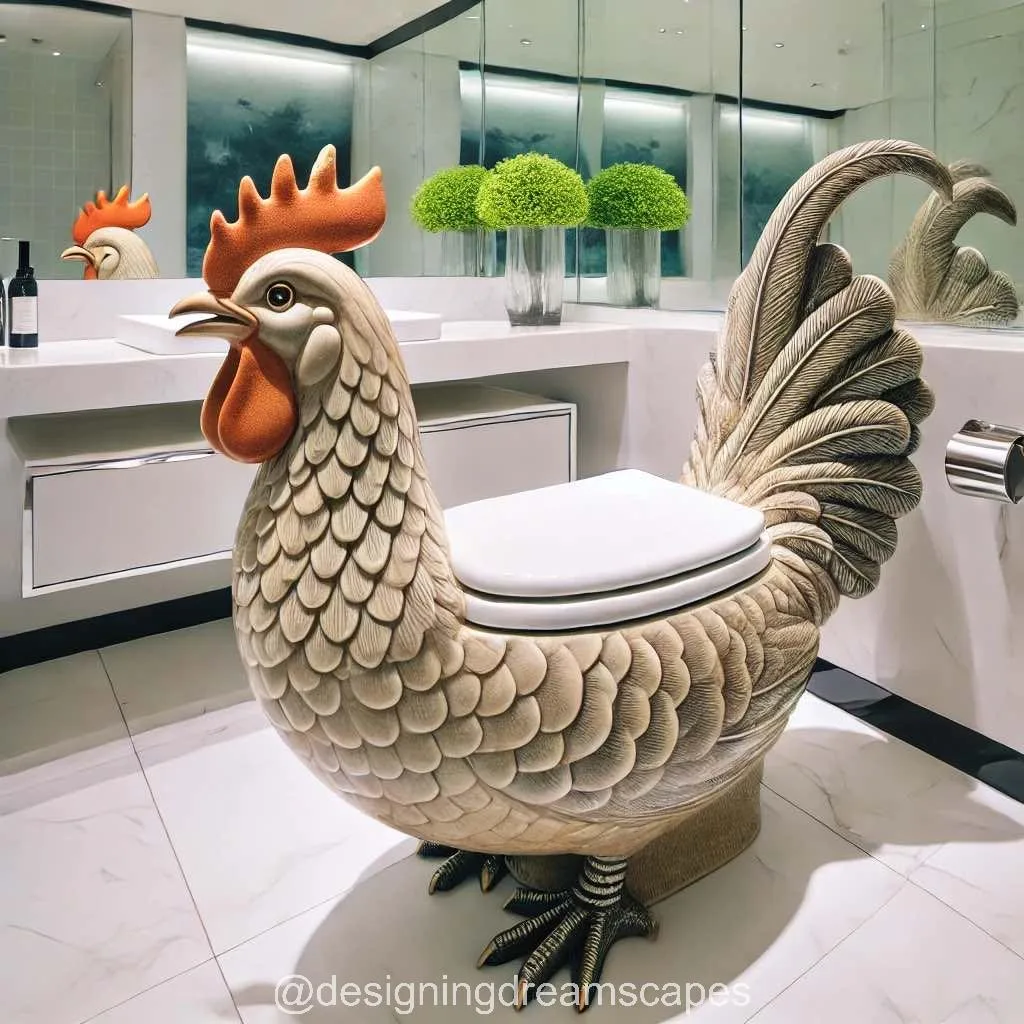
How to Implement Chicken Toilets in Your Coop
Choosing the Right Chicken Toilet System
Depending on the scale of poultry farming, different chicken toilet systems may be appropriate. Some options include:
- Simple DIY Solutions: Training chickens to use a specific area with absorbent bedding or trays.
- Pre-Made Chicken Toilet Kits: Commercially available designs with built-in waste collection.
- Automated Systems: High-tech solutions with conveyor belts or self-cleaning mechanisms for large-scale farms.
Training Chickens to Use Toilets
Training chickens to use a designated toilet area requires patience and consistency. Steps include:
- Placing a designated toilet area with attractants like specific bedding or food rewards.
- Encouraging usage by observing chicken behavior and leading them to the area when needed.
- Reinforcing habits by maintaining cleanliness and consistency in their environment.
Maintenance and Cleaning
Even with a chicken toilet system, regular maintenance is essential. Best practices include:
- Emptying waste containers or trays frequently
- Replacing absorbent materials as needed
- Ensuring proper ventilation to prevent moisture buildup
- Using natural deodorizers like baking soda or herbs to control odor
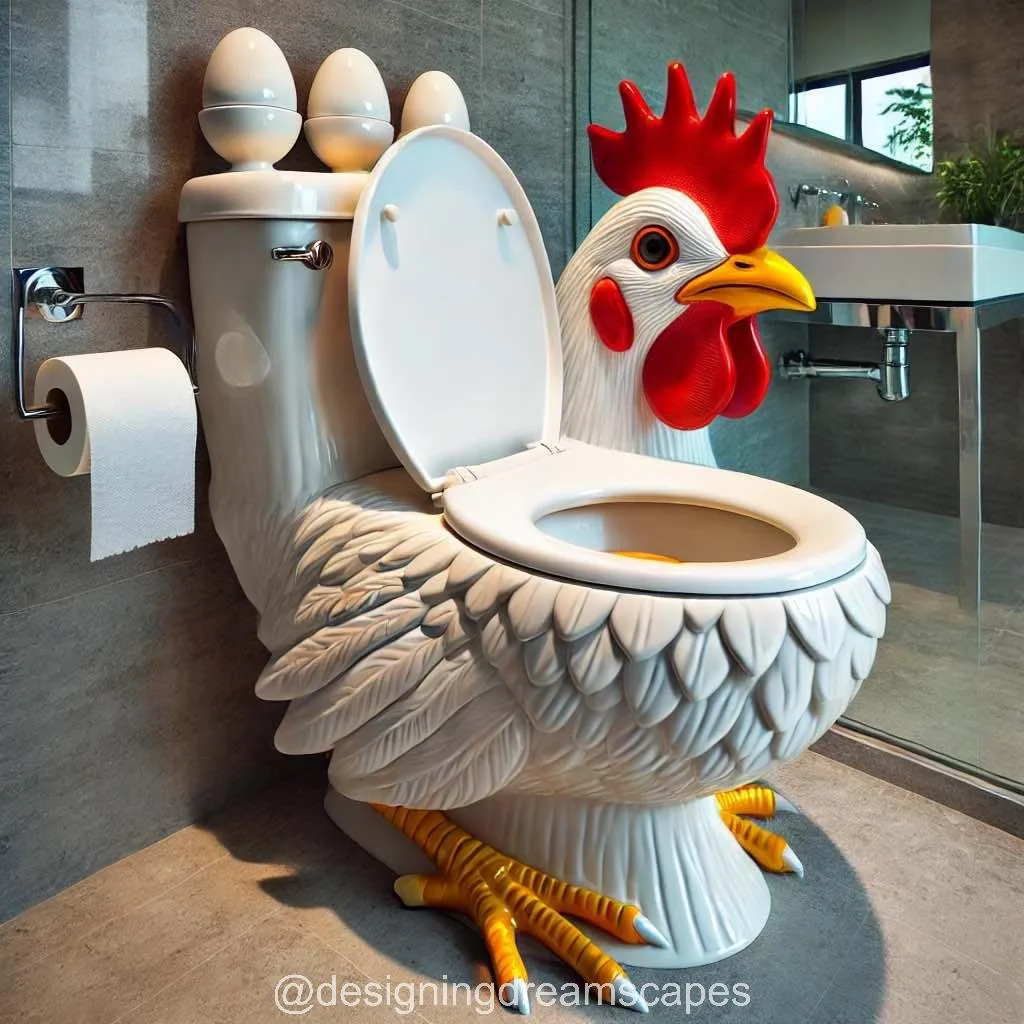
The Future of Chicken Toilets in Poultry Farming
With growing concerns about biosecurity and sustainable farming, the adoption of chicken toilets is expected to rise. Innovations in poultry hygiene are constantly evolving, and automated waste management solutions will likely become more advanced and affordable.
Future developments may include:
- AI-driven smart chicken toilets that monitor waste levels and automatically clean themselves.
- Eco-friendly materials that enhance sustainability and biodegradability.
- Integrated waste-to-fertilizer systems that seamlessly convert manure into usable compost.
As awareness of poultry hygiene and its impact on chicken health continues to grow, chicken toilets may soon become a standard feature in modern poultry farming, offering both convenience and improved animal welfare.
Conclusion
Chicken toilets are a revolutionary step forward in poultry hygiene and waste management. By reducing contamination, improving air quality, and simplifying cleaning routines, they offer numerous benefits to backyard keepers and commercial farmers alike. As innovation in poultry care advances, chicken toilets are poised to play a significant role in sustainable and humane farming practices.
Whether you’re a small-scale poultry keeper or running a large farm, implementing chicken toilets can enhance the overall health, comfort, and productivity of your chickens, ensuring a cleaner and more efficient farming experience. Investing in this innovative system is not just about convenience—it’s a commitment to better poultry care and sustainable agricultural practices.

